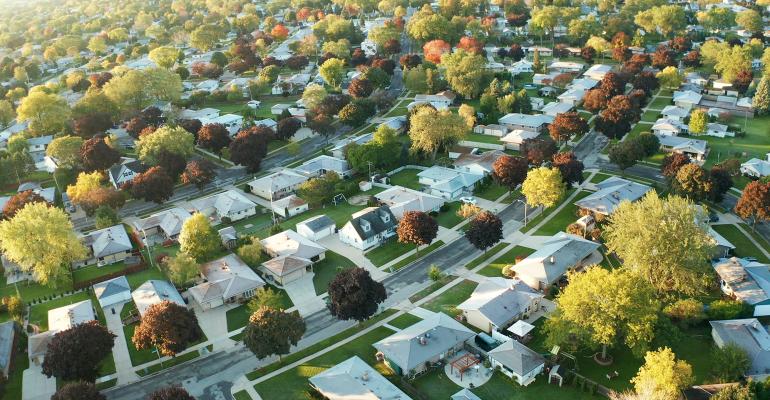(Bloomberg Opinion)—As coronavirus vaccines approach a widespread rollout, the next six months of economic activity are going to be dominated by the impact of society's growing immunity — and easing fears. Combined with historically low levels of housing inventory, that could make the traditional spring homebuying season a particularly frustrating one for buyers.
Recent housing data show how tight inventories already are. The supply of existing homes fell to 2.5 months in October, a record low for a period when normal inventory levels are four to five months of supply. For new homes, the months’ supply of inventory fell to 3.3 in October, also a record low.
Real-time inventory data from Altos Research shows that the supply of homes on the market continues to be down more than 40% year-over-year. This is one reason why sentiment from homebuilders is at record-high levels and why home-price growth is accelerating.
Now layer on the timing for potential vaccine rollouts. Goldman Sachs forecasts that half of Americans will be vaccinated by May. When you consider that some people have acquired natural immunity through infection -- perhaps as many as 30% -- it's possible that the U.S. could be approaching herd immunity by late spring. At the least, we should see far less spread of the virus than we've seen since the onset of the pandemic.
That portends a V-shaped recovery by the middle of next year in areas of the economy hardest-hit by the pandemic. While questions will remain about business travel and going into the office -- activities that may see permanent shifts from the pandemic -- there will be a rise in employment and demand for travel and leisure industries.
That should have positive second-order effects even for workers and consumers who haven't been directly affected by the pandemic. Workers who didn't lose income may have increased their savings for fear they might yet get laid off. The abatement of that risk should give them more confidence to spend.
That could mean a new cohort of U.S. households looking to buy homes in the spring. While the pandemic accelerated the purchase plans of many renters, there was also the view among some people that a pandemic is a poor time to make a big financial decision, such as buying a house. It's these households that may decide that early 2021 is their time to buy, only to run into the challenges of low inventories and high prices.
There might be some offsetting factors on the supply side. Some homeowners that decided not to list their homes for sale during the pandemic may now choose to do so. And an end to foreclosure moratoriums, which contributed to the inventory shortage by holding homes off the market in 2020, could increase supply in 2021.
Post-pandemic market signals might also lead households to make different decisions than they would have a year ago. Let's say home prices are 12% higher in the second quarter of 2021 than they were at the end of 2019. Meanwhile, apartment rents have fallen in many cities, particularly high-cost cities like New York and San Francisco.
It's possible that the rent-versus-own math may have shifted as much as 30% towards renting rather than buying by next May. For those so inclined, it might be a better financial move to rent for a while at a bargain price rather than getting into bidding wars for suburban homes selling at elevated prices. This sort of dynamic could help rebalance the housing market and give hard-hit cities a lift as they begin their post-pandemic recoveries.
But the base case next year should be a historically-strong first half for the housing market, fueled by crisis-level inventories, low interest rates, a post-vaccine economic boom and a demographic tailwind from family-forming Millennial households. This will be welcome news for the economy -- unless you're looking to buy.
To contact the author of this story: Conor Sen at [email protected].
© 2020 Bloomberg L.P.

